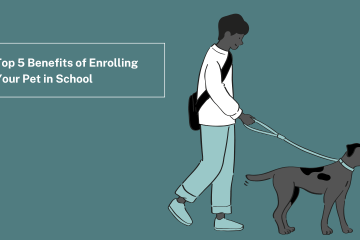DIY Pet Grooming Tools
Looking to groom your furry friend at home? Discover a range of DIY pet grooming tools that will help you keep your pet looking their best. Save time and money with these essential tools for DIY pet grooming.
Are you tired of spending a fortune on professional pet grooming services? Look no further! DIY pet grooming is a cost-effective and rewarding way to keep your furry friend looking and feeling their best. But where do you start? Well, having the right tools is key. In this article, we will explore a variety of essential DIY pet grooming tools that will help you achieve professional-level results from the comfort of your home. Get ready to unleash your inner groomer and give your pet the pampering they deserves!
Basic Grooming Tools
To ensure effective grooming for your pets at home, it is essential to have the right tools. Here are some basic grooming supplies every pet owner should have:
Also Read: Helping Children Cope With Pet Loss.
- Brushes: Different pets have different coat types, so choose an appropriate brush for your pet’s fur. Bristle brushes work well for short-haired pets, while slicker brushes are ideal for removing tangles and mats from long-haired pets.
- Combs: Combs help detangle and remove loose hair from your pet’s coat. Look for combs with wide and narrow teeth to cater to different coat types.
- Scissors: Small, round-tipped scissors are useful for trimming hair around your pet’s face and paws, while longer scissors can be used for general trimming.
- Clippers: Clippers are necessary if you plan to do more extensive grooming, such as giving your pet a haircut. Choose clippers specifically designed for pets, and make sure they are sharp and well-maintained.
Bathing Supplies
When grooming your pets home, having the right bathing supplies is essential. Here are some must-have items to make the bathing process easier and more effective:
- Shampoo: Choose a gentle, pet-specific shampoo formulated for your pet’s needs, such as sensitive skin or allergies. Look for shampoos that are free from harsh chemicals and fragrances.
- Towels: Keep a stack of absorbent towels handy to dry your pet after bathing. Opt for soft, quick-drying towels designated specifically for your pet’s use.
- Brush & Comb: Before bathing your pet, brush or comb remove any loose fur or tangles. This will make the bathing process more efficient and help prevent mats from forming during the bath.
Grooming Accessories
When grooming your pets at home, having the right accessories is crucial. Here are some essential grooming accessories that will help you keep your pets looking their best:
- Nail Clippers: Trimming your pet’s nails is an important part of their grooming routine. Invest in high-quality nail clippers that are specifically designed for pets. Be sure to choose the right size and style based on your pet’s nail type and size.
- Ear Cleaners: Keeping your pet’s ears clean prevents infections. Look for gentle ear cleaners that are specifically formulated for pets. Use cotton balls or pads to clean the ears, and be careful not to go too deep.
- Toothbrushes: Dental hygiene is just as important for pets as it is for humans. Regular brushing can prevent dental issues and bad breath. Get a toothbrush and toothpaste specially designed for pets and make it a regular grooming routine.
Grooming Storage Solutions
Keeping your pet grooming tools organized and easily accessible is essential for a hassle-free grooming experience. Here are some grooming storage solutions that will help you keep your grooming supplies in order:
- Grooming Kit: Invest in a high-quality grooming kit with compartments and pockets to store your brushes, combs, scissors, and clippers. This will ensure you have all your tools in one place and can easily find what you need when grooming your pet.
- Pet Grooming Table: Consider getting a pet grooming table with built-in storage drawers or shelves. This will give you a dedicated space for grooming and ample storage for your grooming accessories like nail clippers, ear cleaners, and toothbrushes.
- Portable Grooming Caddy: A portable grooming caddy can be a great solution if you prefer a more mobile grooming setup. These caddies usually have multiple compartments and trays to hold your grooming tools and products. They are lightweight and easy to carry from room to room or even traveling.
- Wall-Mounted Storage: Maximize your storage space by utilizing wall-mounted storage solutions. Install hooks or shelves in your grooming area to hang your brushes, combs, and other tools. This keeps your tools organized and saves valuable counter or cabinet space.
- Clear Containers: Use plastic containers or bins to store smaller grooming accessories like nail clippers, ear cleaners, and toothbrushes. You can easily see and access these items without rummaging through drawers or cabinets.
Pet Grooming Tips & Tricks
Preparing Your Pet for Grooming:
- Start by introducing your pet to grooming tools gradually. Let them sniff and explore the brushes, combs, and clippers.
- Develop a positive association with grooming by offering treats and praise during and after each session.
- Begin with short grooming sessions and gradually increase the duration as your pet becomes more comfortable.
- Familiarize yourself with your pet’s body language to identify signs of stress or discomfort.
How to Cut Your Pet’s Nails
Keeping your pet’s nails trimmed is essential for their health and comfort. Here are some steps to follow to safely and effectively cut your pet’s nails:
- Gather the necessary tools: You will need a pair of nail clippers designed specifically for pets. There are two main types: guillotine-style clippers and scissor-style clippers. Choose the one that you feel most comfortable using.
- Find a quiet and well-lit area: Choose a calm and well-lit space where you and your pet can feel relaxed during nail-trimming. It’s important to create a positive and stress-free environment.
- Get your pet comfortable: Before trimming the nails, help your pet get comfortable by giving them treats or praise. Gradually introduce them to the clippers and let them sniff and investigate the tools.
- Hold your pet’s paw firmly but gently: Hold your pet’s paw securely but without causing any discomfort. Be mindful not to squeeze too tightly, as this might frighten or distress your pet.
- Identify the quick: The quick is a small, pinkish nail area containing blood vessels and nerves. It’s crucial to avoid cutting into the quick, as it can cause bleeding and pain. With light-colored nails, you can easily see the quick. However, for dark-colored nails, it’s more challenging. In these cases, trim small amounts at a time to be cautious.
- Trim the nails gradually: Make small cuts to prevent accidentally cutting into the quick. Take a small portion off each nail, focusing on their tips. If you’re uncertain or uncomfortable doing it yourself, consult a professional groomer or a veterinarian.
- Stay calm and patient: Your pet might feel nervous or anxious during the process, so you must remain calm and patient. Take breaks if needed, and reward your pet with treats and praise after each successful trimming session.
How to Brush Your Pet’s Teeth
Maintaining good oral hygiene is essential for your pet’s overall health. Brushing your pet’s teeth regularly helps prevent dental problems and keeps their breath fresh. Here are some steps to follow for effective tooth brushing:
- Get the right tools: Invest in a pet-specific toothbrush and toothpaste. Human toothpaste can harm pets, so choose a toothpaste specifically for animals. Different toothbrush options are available, including finger brushes and brushes with soft bristles. Choose the one that works best for your pet.
- Introduce tooth brushing gradually: Let your pet sniff and lick the toothpaste to get them used to the taste. Then, gradually introduce tooth brushing by gently rubbing the toothbrush against their teeth and gums. Ensure that you are using light pressure to avoid causing discomfort.
- Use a circular motion: Position the toothbrush at a 45-degree angle and brush in circular motions. Focus on the outer surfaces of the teeth, as these areas tend to accumulate more plaque and tartar. Pay special attention to the back molars, where dental issues often arise.
- Be patient and give rewards: Brushing your pet’s teeth may take time for them to get used to the sensation. Be patient and stay calm throughout the process. Offer praise and rewards, such as treats or playtime, to reinforce positive behavior.
- Make it a regular routine: Aim to brush your pet’s teeth thrice weekly. Consistency is key to maintaining good dental health. Establish a regular brushing schedule that works for both you and your pet.
Conclusion
If you’re like most pet owners, you’re always looking for ways to save money and time. Check out these DIY pet grooming tools to help you get the job done right! Grooming tools are essential for keeping your pets looking their best. Not only do they save you time, but they’re also a lot less expensive than going to the vet.



0 Comments